Captain John Postlethwait's Tavern
Introduction
Text-to-speech Audio
Images
Not many photos of the original tavern have survived. This photograph captures the newly built Phoenix Hotel after it was built following Postlethwait Tavern's fire.
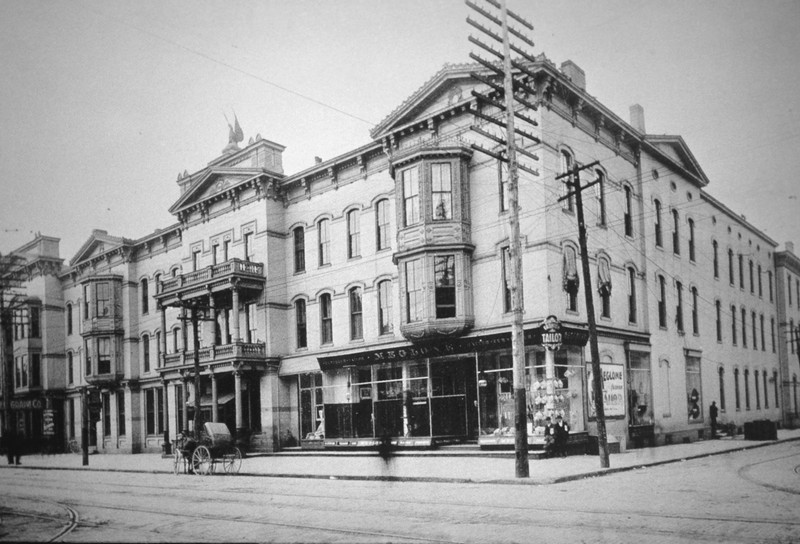
This map indicates where Postlewait's Tavern was located in proximity to other roadways in Lexington. (Green marker)
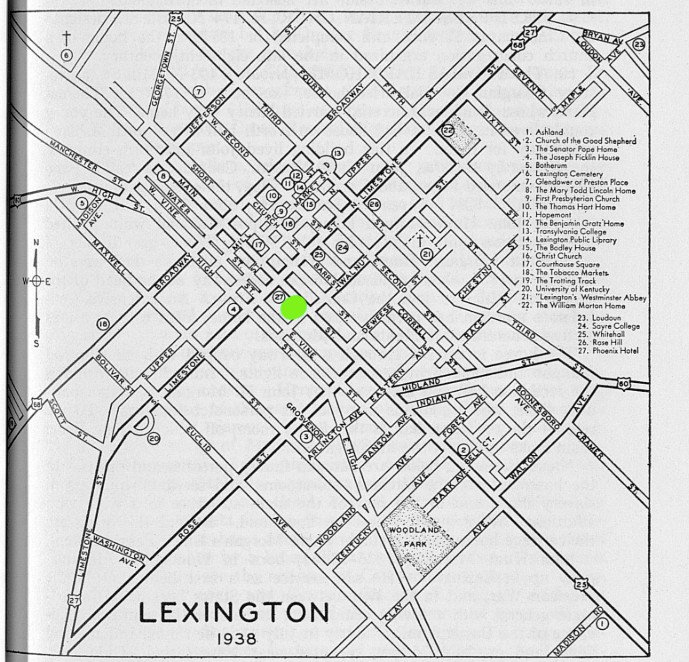
The Phoenix Hotel burning down in 1879. This was the second fire at this location, with the first coming at the beginning of the century with the burning down of Postlethwait's Tavern.
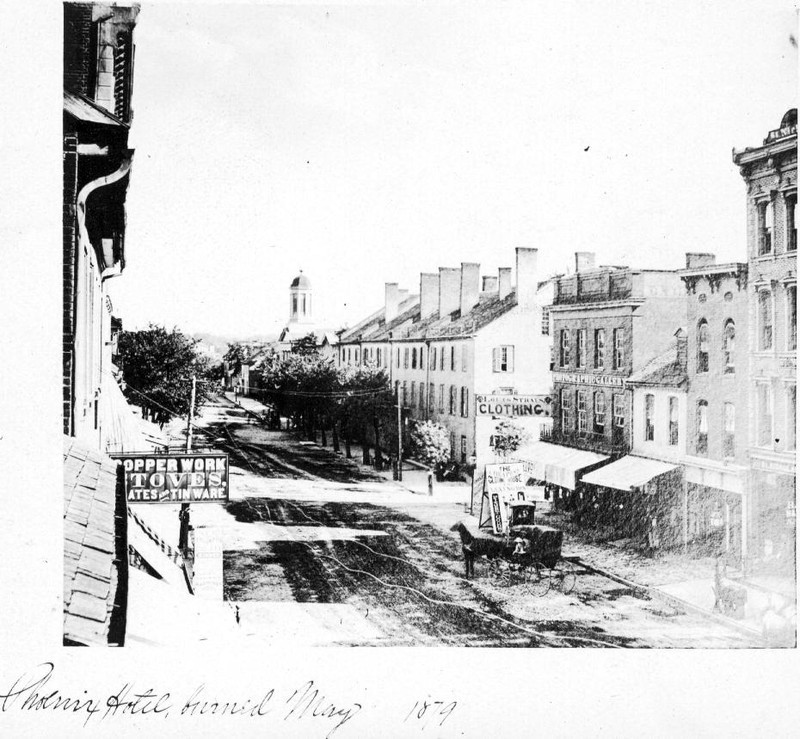
An example of what a tavern looked like during this time period. The photograph is of the Talbott Tavern in Bardstown, Kentucky.
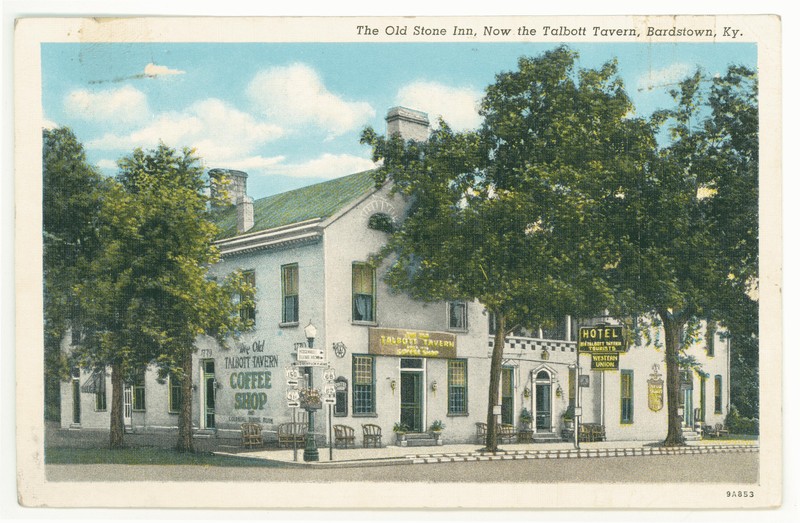
An image of the inside of the same tavern in Bardstown, Kentucky.
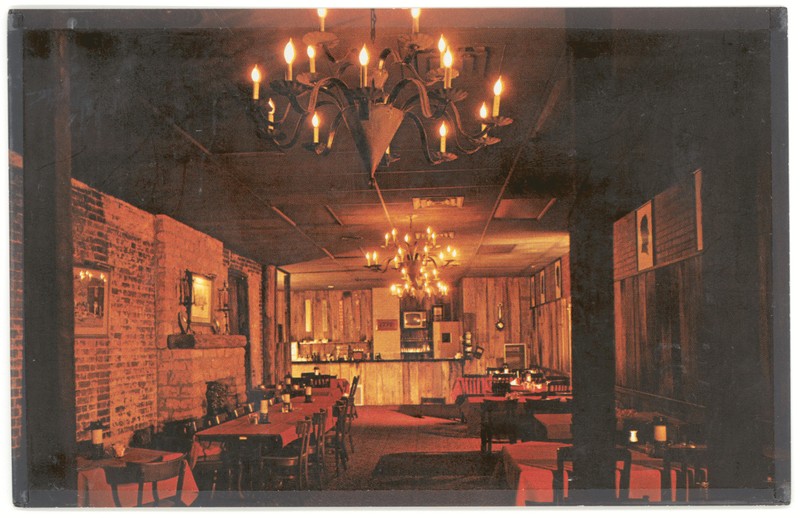
Backstory and Context
Text-to-speech Audio
In early American pioneer life, alcohol was the undisputed drink of choice. After relations with the rum-supplying British were cut off after the Revolutionary War, the new country looked to Kentucky and Ohio for liquor production.[2] It was said that by the 1830’s that people in the U.S. over the age of 15 were consuming more than seven gallons of alcohol a year.[3] For this reason we know that Postlethwait’s Tavern must have been a gathering place in which a myriad of Lexitonians frequented. In fact, Postlethwait’s personal daybook includes page after page of long bar tabs he kept for people who had to have been regulars.[4]
Captain John Postlethwait saw his humble beginnings as a tavern owner originate in 1797 after serving as a former Revolutionary War officer.[1] Along with his brother, Captain Postlethwait, “built a low rambling log house,” which had very elegant taste.[2] His tavern served both common folk and also prominent citizens of his day. One of the brilliant features of Postlethwait’s Tavern that made it so popular was the fact that pools for horse-racing were sold inside.[2] Postlethwait’s legacy, however, did not just lie in this tavern. If this were so, it would have been tarnished in the fires that burnt it to the ground, twice, and then saw the ashes built over by what became the Phoenix Hotel.[1] Instead, Captain Postlethwait’s legacy was more diversified as he was noted as a, “pioneer hotel keeper, horseman, and public citizen.”[2]
In Kentucky at this point horse racing was just beginning to come to prominence. Postlethwait's Tavern became a key cog in the gambling industry of horse racing. According to a piece composed by the Kentucky Writers' Project, Postlethwait's Tavern became a popular destination amongst, “early Kentucky horsemen.”[2] Postlethwait himself was one of the leading members of Kentucky's early racing industry. According to the same source, Postlethewait, along with statesman Henry Clay, were the leaders is establishing the "Kentucky Association for the Improvement of Breeds of Stock."[2] Furthermore, it was at Postlethwait's Tavern specifically that folks gathered, "and talked up the breeding of light horses."[1] It is apparent that Captain John Postlethwait and his tavern were more than just a business.
Located between Water and Main streets, Postlethwait’s Tavern was at the center of the cholera epidemic in the Bluegrass.[5] With the Town Branch waterway located nearby, the water being used in the tavern was likely contaminated after all of the summer storms. This location’s death toll, in particular, became well known, as one physician pointed out that, “the fatality along Main and Water Streets was appalling.”[6] The coincidence that death tolls were so high near Postlethwait’s Tavern is no coincidence at all. The fact of the matter was the being so near to Town Branch and that the tavern was a very popular downtown destination led many who frequented the establishment, and its neighboring businesses, to becoming ill with cholera.
The weather in Lexington was a large contributing factor to cholera’s outbreak in the summer of 1833.[5] According to reports, the beginning of the month of June that year saw Lexington experience several days of constant thunderstorms.[6] One Lexington physician claimed that more rain fell in just one day and night, “than is usually allotted to a month.”[6] In the 19th century, sewer systems were still not a part of most cities’ infrastructures, therefore common outhouses were still in existence. So, this abundance of rain eventually caused local waterways, such as nearby Town Branch, to overflow and cause shallow privies to, “spill their contents onto the ground.”[5] This combination of events did not bode well for the patrons of Postlethwait’s Tavern as the disease seized a great number of influential Lexington figures.[2]
Captain John Postlethwait was one of many prominent people in Lexington who lost their lives at the outbreak of this disease.[7] The disease spared no one regardless of social status. Among the dead in Lexington were, “three physicians, a number of merchants and mechanics...and Mr. Postlethwait.”[7] Until put into the right context, it is difficult to observe how widespread and fervent cholera became in Lexington that dreadful summer. The first confirmed case of the disease occurred on June 3rd of that year, and just 6 days later on June 9th, “some physicians think 1,500, were ill of the disease.”[6] Postlethwait's Tavern will therefore go down in history as both a place that brought people together for enjoyable conversation and a place that a horrible disease had its roots in.
Sources
1) Federal Writers’ Project, The WPA Guide to Kentucky, (Lexington, Ky: University Press of Kentucky, 1996), 210.
2) Federal Writers' Project, Lexington and the Bluegrass Country, (Lexington, Ky: E.M. Glass, 1938), 25-137.
3) Livia Gershon, “A Brief History of U.S. Drinking,” accessed December, 4 2019, https://daily.jstor.org/a-brief-history-of-drinking-alcohol/.
4) Postlethwait's Tavern. Postlethwait's Tavern Daybook, 1797-1803, 1797-1801 (bulk Dates). 1797.
5) Terry Foody, “Killer in the Bluegrass”, Accessed November 18th, 2019. http://terryfoody.net/images/Cholera_Foody.pdf.
6) Lunsford P. Yandell, An Account of Spasmodic Cholera as It Appeared in the City of Lexington in June 1833, (Lexington, Ky: Beyond the Shelf, 1833), 3.
7) Smith, B. B. 1833. CHOLERA IN LEXINGTON, KY. New York Observer and Chronicle (1833-1912). Jul 13, http://ezproxy.uky.edu/login?url=https://search-proquest-com.ezproxy.uky.edu/docview/136202556?accountid=11836 (accessed November 14, 2019).
https://exploreuk.uky.edu/catalog/xt7d513tw53v_2226_1
Federal Writers’ Project, The WPA Guide to Kentucky, (Lexington, Ky: University Press of Kentucky, 1996), 203.
https://exploreuk.uky.edu/catalog/xt7sf7664q86_5326_1
https://exploreuk.uky.edu/catalog/xt7x696zwx82_602_1
https://exploreuk.uky.edu/catalog/xt7x696zwx82_176_1
